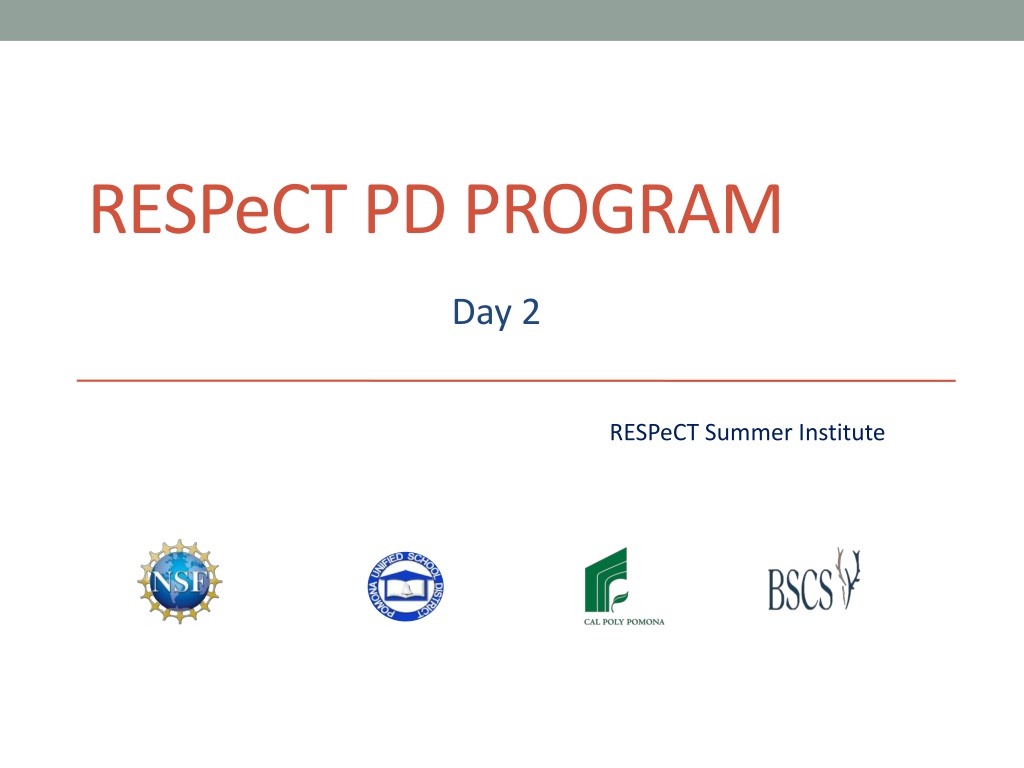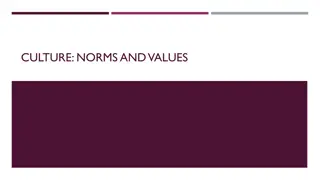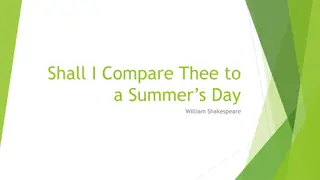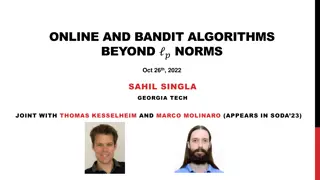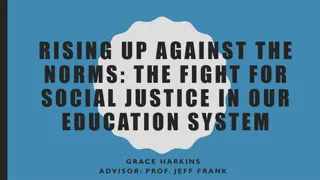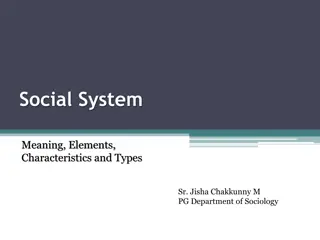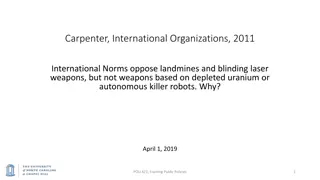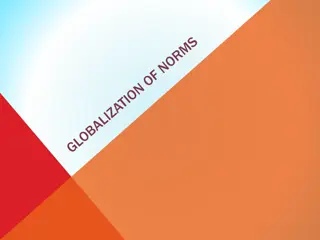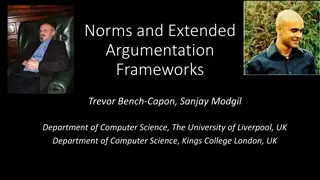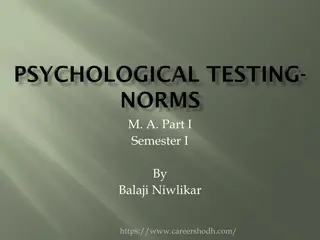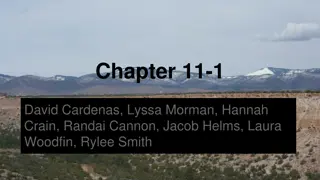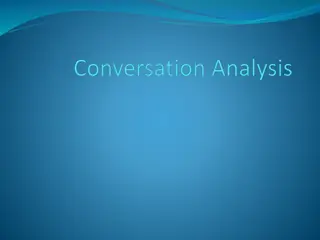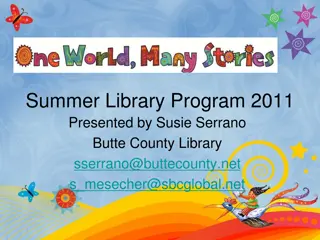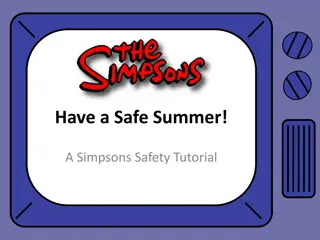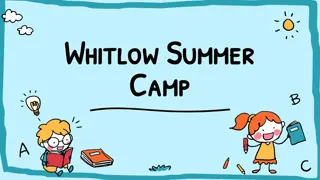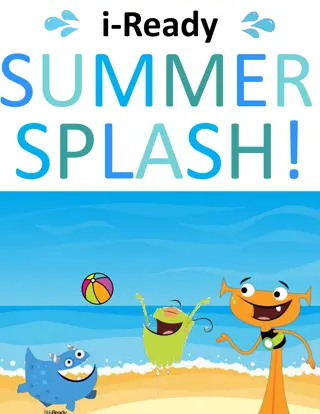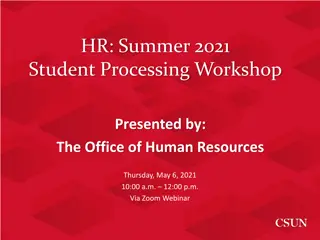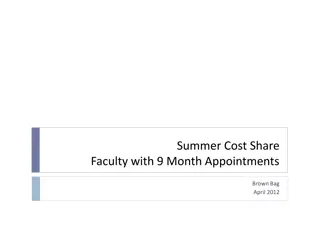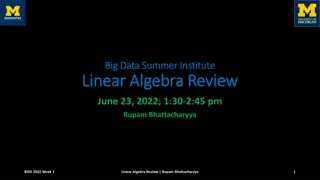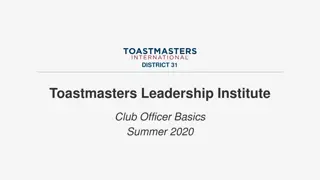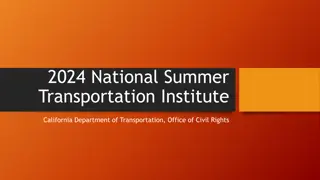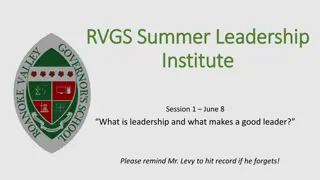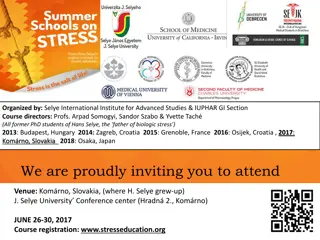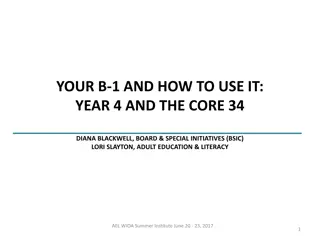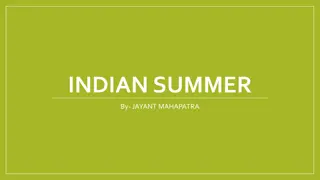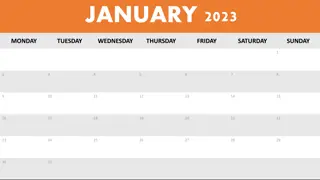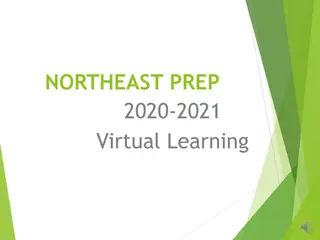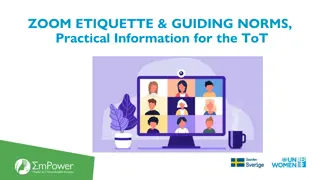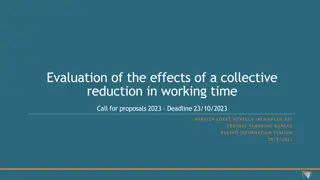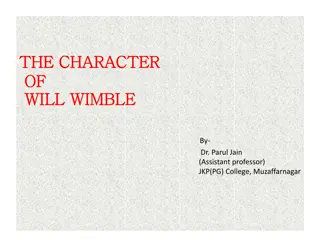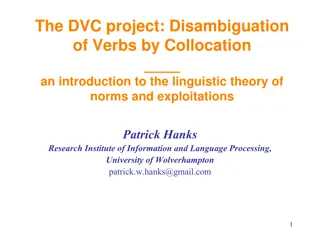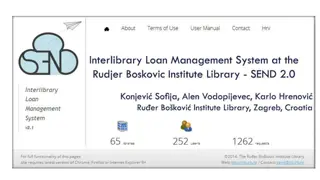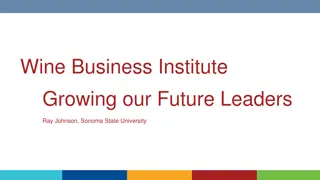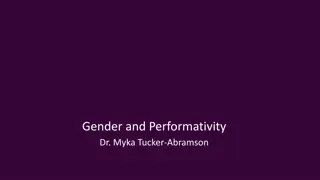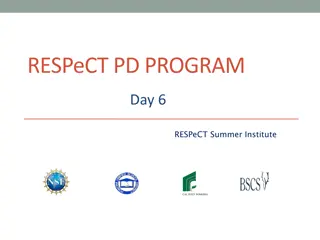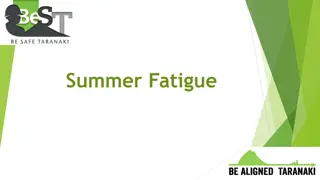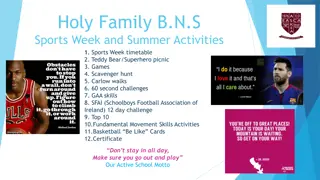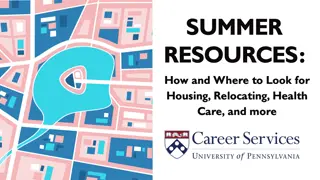RESPeCTPD Summer Institute Day 2: Lessons Analysis and Working Norms
The second day of the RESPeCTPD Summer Institute focuses on trends in reflections, lesson analysis, and content deepening in science education. Participants are guided on the norms for working together effectively and engaging in productive group discussions. Through activities like probing vs. challenging questions and exploring sound concepts, the day aims to enhance participants' understanding and application of key teaching strategies.
Download Presentation

Please find below an Image/Link to download the presentation.
The content on the website is provided AS IS for your information and personal use only. It may not be sold, licensed, or shared on other websites without obtaining consent from the author. Download presentation by click this link. If you encounter any issues during the download, it is possible that the publisher has removed the file from their server.
E N D
Presentation Transcript
RESPeCTPD PROGRAM Day 2 RESPeCT Summer Institute
Trends in Reflections Lesson Analysis Science Content Learning
Norms for Working Together: The Basics Purpose: Build trust and develop a productive study group for all participants. The Basics Arrive prepared and on time; stay for the duration; return from breaks on time. Remain attentive, thoughtful, and respectful; engage and be present. Eliminate interruptions (turn off cell phones, email, and other electronic devices; avoid sidebar conversations). Make room for everyone to participate (monitor your floor time).
Norms for Working Together: The Heart Purpose: Build trust and develop a productive study group for all participants. The Heart of RESPeCT Lesson Analysis and Content Deepening Keep the goal in mind: analysis of teaching to improve student learning. Share your ideas, uncertainties, confusion, disagreements, questions, and good humor. All points of view are welcome. Expect and ask questions to deepen everyone s learning; be constructively challenging. Listen carefully; seek to understand other participants points of view.
Agenda for Day 2 Day-1 reflections Focus questions Review of STL strategies 1 3 STL lesson analysis: elicit and probe questions STL lesson analysis: probe and challenge questions Practice using elicit and probe questions Lunch Content deepening: sound Summary, homework, and reflections
Todays Focus Questions Lesson Analysis How can lesson analysis help us better understand how elicit, probe, and challenge questions can reveal and challenge student thinking? Content Deepening Why are some sounds loud, while other sounds are soft (quiet)? Why does a sound get softer (quieter) as you walk away from the source?
Probe versus Challenge Questions Read one of the dialogue examples for STL strategy 3 in the STeLLA strategies booklet. With an elbow partner, try to justify why each question is labeled probe or challenge. For help, refer to the STL Z-fold summary chart and the explanations, examples, and general questions for strategy 3 in the strategies booklet. Be ready to share your ideas.
Lesson Analysis Focus Question How can lesson analysis help us better understand how elicit, probe, and challenge questions can reveal and challenge student thinking?
RESPeCT Lesson Analysis Protocol 1. Identify the strategy What STeLLA lens and strategy was the teacher using in the video clip? 2. Analyze the video What student thinking was made visible (or not)? How did the use of the STeLLA strategy impact student thinking? 3. Reflect and apply What did you learn from identifying and analyzing the strategy in the video?
Lesson Analysis Process 1. Review the lesson context: What is the ideal student response to the focus question? How is the clip situated in the content storyline? 2. Identify and discuss the strategy that is the focus of analysis for each clip. 3. Watch video clip(s). 4. Analyze the lesson using the lesson analysis protocol. 5. Reflect on the lesson analysis experience: As a reviewer As a teacher in the clip
Lesson Analysis: Viewing Basics Viewing basic 1: Look past the trivial, or little things, that bug you. Viewing basic 2: Avoid the This doesn t look like my classroom! trap. Viewing basic 3: Avoid making snap judgments about the teaching or learning in the classroom you re viewing. Note: Find out more about the viewing basics on page 1 of in the STeLLA strategies booklet.
Video Clip 1 Our First Video Clip Context: An interview with one student before the teacher begins instruction on sound.
Video Clip 1 Identify Elicit and Probe Questions Watch the video clip for examples of the interviewer or teacher asking the student elicit and probe questions. Identify the questions on your transcript and mark them E (elicit) and P (probe). Share your evidence with the group. Remember: 1. Not all questions will fall into the E and P categories. 2. Elicit questions start a conversation and ask for student ideas without expecting right answers. 3. Probe questions try to figure out what a student means. 4. Probe questions can paraphrase a student s idea. Link to video clip 1: 2.1_mspcp_gr1_sound_derose_pre.hayden_c1 Link to video clip 1: 2.1_mspcp_gr1_sound_derose_pre.hayden_c1
Video Clip 1 Analyze Student Thinking Review the interview transcript. What student thinking was revealed through the interviewer s elicit and probe questions? What ideas did Hayden have about how sound? Were there places you wished the interviewer had probed the student s thinking more? Why?
Video Clip 2 Identify Probe and Challenge Questions Now we ll look at a classroom video and focus on identifying probe and challenge questions. Read the context at the top of the video transcript (handout 2.2). Identify probe (P) and challenge (C) questions and mark them on your transcript. Mark missed opportunity (MO) next to places you would like to know more about student thinking. Remember: 1. Not all questions will fall into these categories. 2. Probe questions try to figure out what a student means or is thinking. Challenge questions try to move student thinking toward a more scientifically accurate idea. Link to video clip 2: 2.2_mspcp_gr1_sound_derose_L1_c2 Link to video clip 2: 2.2_mspcp_gr1_sound_derose_L1_c2
Video Clip 2 Identify Probe and Challenge Questions What are good examples of probe questions in the video transcript (if any)? What are good examples of challenge questions in the transcript (if any)?
Identify Missed Opportunities to Probe Student Thinking Video Clip 2 Individuals: Locate one missed opportunity in the video where the teacher could have asked a probe question. Suggest a probe question to better understand student thinking. Turn and Talk: Turn to a partner and share your possible probe question. Provide each other with feedback. Ask, Is this a probe question? Why or why not? Whole group: Do you need any clarification?
Video Clip 2 Common Student Ideas 1. Locate Common Student Ideas about Sound (in lesson plans binder). 2. Read through the left-hand column. Have you observed any of these common ideas among your students? (Mark these ideas with a red dot.) Have you ever held any of these ideas yourself? (Mark these ideas with a blue dot.) Can you think of other misconceptions you ve held or observed in students? 3. Pairs: Share your observations with a partner. 4. Whole group: What patterns do you notice in the red and blue dots? What did this analysis make you think about?
Video Clip 2 Common Student Ideas Individuals: Read the scientific explanations for your assigned idea on the Common Student Ideas chart. Pairs: Discuss these explanations briefly with a partner. What was new to you? Write on sticky notes any content questions you have and place them on the Parking Lot poster.
Lesson Analysis Basics Analysis basic 1: Focus on student thinking and the science content storyline. Analysis basic 2: Look for evidence to support any claims. Analysis basic 3: Look more than once (in the video and transcript). Analysis basic 4: Consider alternative explanations and teaching strategies. Note: Find out more about the analysis basics on page 2 of the STeLLA strategies booklet.
Analyze Questions That Probeand Challenge Student Thinking Video Clip 2 Analysis question: What student thinking is made visible (or not) through the use of probe or challenge questions? Be specific. Consider whether you observed any of the common student ideas or correct scientific explanations in the video. Individuals: Make notes or highlight questions/responses on the video transcript. Develop a claim to answer the question. Support the claim with evidence from the transcript, ideas from the Common Student Ideas chart, and/or ideas from the STeLLA strategies booklet. Whole group: Share claims and evidence.
Identify Probe, Challenge, and Leading Questions Now we ll look at another classroom video. Read the context in the video transcript (top of handout 2.3). Individuals: Mark the transcript to identify probe (P), challenge (C), or leading (L) questions. Then mark any missed opportunities (MO). Remember: 1. Not all questions (or statements) will fall into these four categories: P, C, or L. 2. Review the viewing basics and analysis basics. Whole-group share-out: Give reasons for marking the questions the way you did. Video Clip 3 Link to video clip 3: 2.3_mspcp_gr1_sound_doody_L6_c3 Link to video clip 3: 2.3_mspcp_gr1_sound_doody_L6_c3
Video Clip 3 Analyze Student Thinking Analysis question: What student thinking is made visible (or not) through the use of probe or challenge questions? Be specific. Individuals: Develop a claim to answer the analysis question. Support the claim with evidence from the video transcript, ideas from the Common Student Ideas chart, and/or ideas from the STeLLA strategies booklet. Whole group: Share claims and evidence.
Summarize: Elicit, Probe, and Challenge Questions 1. What makes a good elicit question? A good probe question? A good challenge question? 2. What do you need to know to ask good elicit, probe, and challenge questions? To ask good questions that make student thinking visible, you need a clear understanding of a. the science concepts you are teaching, and b. alternative ideas that students may hold.
Reflect on Your Learning Respond to these questions in a quick write: 1. What did you learn about student thinking from analyzing these videos? 2. How did the analysis process help you better understand the questioning strategies? Be prepared to share your ideas.
Practice Elicit and Probe Questions: Interview Planning The challenge: Pair up and practice using elicit and probe questions. First ask your partner an elicit question and then ask only probe questions to find out what your partner thinks. To prepare: a. Read your elicit question. b. Read the common student ideas and scientific explanations that relate to your question. c. Plan probe questions to clarify ideas you think might emerge.
Practice Elicit and Probe Questions: Interview Process 1. Ask your partner the elicit question. 2. Probe your partner s thinking without providing any new information. (Keep going for at least 2 minutes!) 3. Debrief with your partner: What probe questions did you ask? Did you ask questions that weren t probe questions? What did your probe questions reveal about your partner s understanding of the concept? 4. Switch roles and repeat the interview process, with the other partner asking the questions.
Group Discussion 1. How did the interviews go? What did you find difficult as an interviewer? As a responder? 2. Which probe questions revealed some interesting clarifications or elaborations? 3. Did any of your questions end up challenging your partner s thinking? (Did your questions move your partner s thinking toward a more scientifically accurate response?)
SOUND SCIENCE CONTENT DEEPENING Grade 1
How Does Sound Travel? Scenario: A bird is singing in a tree above a group of people. Everyone hears the bird at the same time, but some people hear a loud sound and others hear a soft sound. Why do you think some people hear a soft sound instead of a loud sound? What happens to sound as it travels farther from the source?
How Does Sound Travel? Courtesy of Hector Mireles
Drawing Sound Waves Circular Wavefront 1. The source (bell) is at the center (inner circle). 2. Circles (sound waves) travel away from the source in all directions. 3. A person receives a sound when a circle reaches his or her ears. 4. The distance between the circles is always the same. It represents wavelength. Courtesy of BSCS
Review: Where Does Sound Come From? 1. Can you hear the sound from this source? 2. Can you identify where the sound is coming from? 3. Can you identify where the sound is coming from with one ear covered?
Review: Where Does Sound Go? Create a pictorial representation on the handout showing where sound travels from the source (the bell). Courtesy of BSCS
Review: Where Does Sound Go? When something makes a sound, where does the sound go? What is our evidence? Write your ideas and evidence in your notebook. Be prepared to share with the group.
STeLLA Strategy 3: Challenge Questions STL strategy 3: Ask questions to challenge student thinking. Purposes: Challenge students to develop deeper understandings of science ideas. Help students change their thinking and move toward more-scientific understandings. Scaffold/guide student thinking toward new connections and science vocabulary. How can we challenge our students to deepening their understandings of science concepts about sound?
Main Learning Goals Large vibrations in the air generate the loud sounds we hear, and smaller vibrations generate softer, quieter sounds. When you re far away from the source of a sound, your ears receive a smaller portion of the sound energy than when you re close to the source. The vibrations of atoms are smaller (the sound is quieter) when you re farther away from the source.
Content Deepening Focus Questions Why are some sounds loud, while other sounds are soft (quiet)? Why does a sound get softer (quieter) as you walk away from the source?
Content Deepening: Focus Question 1 Why are some sounds loud, while other sounds are soft (quiet)?
Investigation 1: Barking Dogs 1. What is the source of the sound in this diagram? 2. How does the sound travel from the source to the recipient? Courtesy of Hector Mireles
Investigation 1: Barking Dogs 1. What is the difference between the sound waves the loud dog (A) and the quiet dog (B) are emitting? Why? 2. If both dogs bark this way for 40 minutes without stopping, which dog will get tired sooner? Why? 3. What is the difference between the sound waves from each dog when they reach the ears of their respective owners? Courtesy of Hector Mireles
The Intensity of Sound When an object makes a sound, it causes the air around it to vibrate. These vibrations in the air travel from the source in all directions. Vibrating air molecules carry energy from the source. Intensity refers to the amount of energy a sound wave possesses. (Note: Intensity is not frequency. This difference will be explored in depth next time.) Higher velocity of air molecules = more sound energy (intensity) Lower velocity of air molecules = less sound energy (intensity)
The Intensity of Sound Air molecules in louder sounds have a greater intensity than air molecules in softer sounds. A source (soundmaker) exerts more energy to make louder sounds than softer sounds. Your eardrums vibrate more vigorously when your ears catch (receive) a higher-energy sound than a lower-energy sound. Higher- energy sounds are much louder!
Drawing the Velocity of Atoms The individual motion or velocity of atoms in the air can be illustrated as follows: Slower velocity of atoms (less sound energy) Faster velocity of atoms (more sound energy) This method should be used sparingly to illustrate the difference in the motion of atoms. It s less useful in other contexts because it zooms in too much.
What Intensity Is and Is Not What intensity is: The amount of energy a sound wave possesses (how much the atoms in the air move) Relates to how much the air pressure changes Causes an object to receive the energy to move when sound reaches the recipient Determines volume or loudness (High intensity = loud). Can be too much for your ear to handle (Ouch! Be careful with loudness!) What intensity is not: The rate at which vibrations are repeated (frequency) The highness or lowness of a tone (pitch)
Sound-Intensity Challenge Why would any of these guys receive more sound than the others? What would happen to the sound intensity for the guy who is really far away from the source? Why? Courtesy of BSCS
Content Deepening: Focus Question 2 Why does a sound get softer (quieter) as you walk away from the source? Think about this question as we watch a video about how we perceive sound at different distances. Link to video clip: Intensity of Sound
Why Do Sounds Get Softer? Why does the sound seem softer when you re farther away from a speaker compared to when you re close to a speaker? Answer this question in your science notebook using evidence from the video to support your ideas. Be prepared to share your ideas and reasoning.
Sound Waves and Their Properties Read sections 4 and 5 in the content background document (resources, lesson plans binder). Pair up with an elbow partner and discuss the Stop and Think question on page 9: What would a pressure-time wave or sine wave look like for a very loud sound compared to a very quiet sound? In your notebook, draw sine waves to show what a loud sound and a quiet sound would look like.
